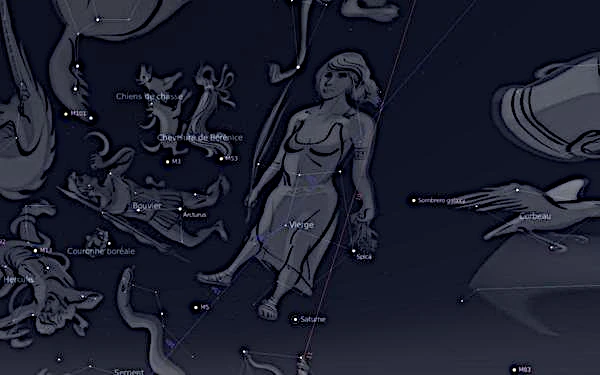
Image: Constellation Virgo. Image reworked from Open Source Stellarium software.
Today we are going to explore another fascinating constellation: the constellation Virgo. This constellation is located in the northern hemisphere and is visible during the summer months. It is easy to spot because it contains a very bright star called Spica.
In Greek mythology, the constellation Virgo is associated with the goddess Demeter, who was the goddess of fertility and agriculture. The Virgin is often depicted holding a branch of wheat in one hand and a cornucopia in the other.
The constellation Virgo contains many interesting stars. Spica is a double star, which means it is made up of two stars that revolve around each other. Scientists have discovered that Spica is also very fast, spinning at an amazing speed, more than 160 times faster than our Sun!
The constellation Virgo also contains a famous galaxy called the Andromeda Galaxy, which is one of the closest to our Milky Way. It can be seen with the naked eye as a fuzzy patch in the night sky, but telescopes can see its spiral arms and glowing core.
Additionally, Virgo is also associated with several asteroids and comets, which regularly pass through the solar system. Scientists have even found that Virgo contains several stars similar to our Sun, meaning there could be Earth-like planets orbiting them!
The constellation Virgo is surrounded by several other fascinating constellations, such as Leo, Libra, and Scorpio. Try to spot them the next time you look at the night sky, maybe you can even observe the Andromeda galaxy with a telescope.
By exploring the constellation Virgo, you can learn more about the universe and discover all the wonders it has to offer. So have fun stargazing and discovering the secrets of space!